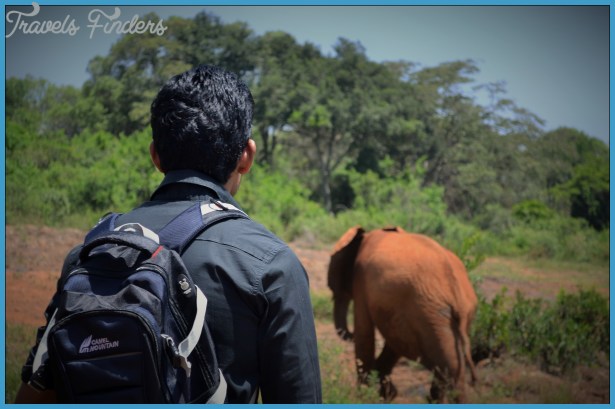Eventually I had evidently cleared every hurdle except the last. It was essential, I gathered, that I was accompanied on to the tip by a uniformed guard complete with his menacing lathi, the long wooden stick so beloved of the Indian police for crowd control’. His function? As far as I could gather he was there to protect me if rabid dogs came our way or some of the refuse pickers inhabiting the tip gave up picking refuse and robbed us instead. It seemed a sensible precaution in the circumstances.
My driver’s increasingly worried looks, his pallor and his wriggling didn’t improve with the uniformed guard sitting between us. He obviously thought I was completely nuts.
So here we were, driving on to the biggest refuse tip in Asia, a tower block of society’s discards, the sickly, putrid smell cloying and stomach-churning in the sun-heated air. The wood and corrugated iron-roofed slum dwellings suddenly seemed a long way below. I jumped out of the vehicle, followed quickly by the guard who looked somewhat poleaxed. He clearly wasn’t expecting me to walk about up there. Needless to say, my driver stayed put. He looked even more nervous and pale than before. Walking about with guard in tow, our driver kept edging the vehicle up to us wherever we went. It wasn’t exactly relaxing but who can relax in a place like this?
Processions of refuse lorries drove past us on to the tip plateau to deposit the waste in a thick cloud of dust. And every time one disgorged its fly-ridden contents, stick-thin families of garbage pickers descended immediately on the stinking mass, combing it for anything of value: bits of plastic, metal, paper, even perhaps some discarded food worth eating. Down the side of the tip away from the slums, women were busily washing clothes in the disease-ridden waters ambling alongside this monstrous muck-pile. Scruffy, emaciated dogs kept their distance. Whether any – or all – of them carried rabies I had no idea. I was just thankful that they didn’t come close.
Birds there were a-plenty. Hundreds of Black Kites hung in the hot, dust-laden air above, diving on to the refuse when they spotted something organic – anything organic to eat. There were no vultures amongst them. Flocks of pretty grey and yellow-tinted wagtails, incongruous in this foul, smelly landscape, flitted from pile to pile, picking off insects which were in copious supply. Back in Britain Yellow Wagtails are birds of wet meadows, farmyards and streams. Not here. For an insect-eating wagtail, Deonar was heaven on earth. But my most surreal experience of the morning was to spot, amid all this squalor, rabid dogs, refuse pickers and stench, a phalanx of hundreds of egrets standing bolt still on top of one part of the tip. All incongruously clean and pure white in this dirty environment, they looked like rows of choirboys spruced-up in line for an important church service on a saint’s day. In a strange way, it made perfect, if perverted, sense. Here was a cathedral to squalor, an environmental eyesore the governing authorities of this huge, sprawling city seem incapable of addressing. And maybe the neat, well-turned out choirboys were a surreal vision of a cleaner future. If there is one. The trouble is, that dream never seems to become reality. Plans to close the squalid Deonar tip and replace it with a modern refuse disposal, energy production and recycling facility have been under discussion for decades. And they keep failing.
Wildlife Trust Travel Photo Gallery
After an hour or so of tip walking, my driver was looking so agitated I thought he might faint. My guard started to tap his lathi rhythmically against his leg in a not-very-subtle display of impatience. It was time to leave. I can’t say I was sorry.
Later that day I talked to a few people who lived in a nearby area of tin shacks, poor people with a hovel not a home, but who still managed to send their kids to school, and in uniform. If I’m lucky I can earn maybe 10,000 rupees [£100] a month, enough to support my family, that’s me, my wife and five children,’ said Arnav Mehta, a shanty dweller who regularly picks over the Deonar tip. Yes, we do go ill, sometimes it is fevers or diarrhoea and sometimes a rash on the skin, but that’s the way it is here.’
So closing Deonar has huge implications. Shutting off the supply of refuse available to the pickers will have dire consequences for the thousands of families that depend on it. They would no longer be able to obtain thrown-away paper, rags, metal and plastics and sell them on for recycling if they don’t have a tip to scavenge on.
Mumbai’s refuse pickers and slum dwellers don’t trust the city authorities. What jobs will they ever have if they can’t pick refuse? What would become of their little repair shops and the hovels that somehow convert bits of discarded metal into something useful if they are moved away compulsorily and find themselves living ten storeys up in a high-rise block? And what are the chances of Mumbai’s slum dwellers all getting improved homes and better living standards in a city riven with corruption? Will they be moved on instead to some other slum?
Finding a place for the city’s refuse-reliant birds to get a feed is the least of the problems. There are plenty of other refuse tips in a myriad of other towns and cities across this vast subcontinent. They can simply fly off to another.


















